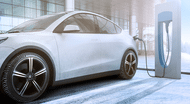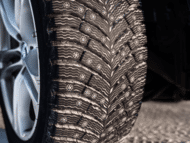
(1) Based on third-party longevity tests, in North Finland between October 2019 and January 2020, on a Volkswagen® Golf 1.5 TSI comparing the MICHELIN® X-Ice® SNOW tire versus BRIDGESTONE® Blizzak WS-90, CONTINENTAL® Viking Contact 7, NOKIAN® Hakkappeliitta R3, GOODYEAR® UltraGrip Ice 2, Pirelli® Ice Zero FR in tire size 205/55R16 94H XL. 7,500 miles (12,000 kilometers) driven per winter is estimated from annual average mileage (kilometers) driven in Canada per vehicle by Desrosiers Automotive Consultants. A winter season is defined as six months.
(2) Based on internal studies done in Ladoux technology center (Clermont-Ferrand) by Michelin between August 2016 and November 2017, on 205/55R16 X-Ice® North 3 and 205/55R16 X-Ice® North 4 tires.
(3) Subjective noise test and objective noise test on black asphalt roads, conducted by TÜV in Germany, on Michelin’s request, in January 2018, on dimension 205/55R16 91V on Volkswagen® Golf VII 1.5 TSI, comparing MICHELIN® X-Ice® North 4 versus NOKIAN® Hakkappeliitta 9 and PIRELLI® Ice Zero competitors. Average of 3 speed conditions (50 - 80 - 110 km/h).
(4) 9% reduction of rolling resistance based on internal studies conducted at the Ladoux Technology Center (in Clermont-Ferrand, France) between August 2019 and January 2020, comparing the MICHELIN X-Ice SNOW tyre versus MICHELIN X-ICE Xi3 in tyre size 195/65R15 using method ISO 28580 at 50 mi/h (80km/h).











